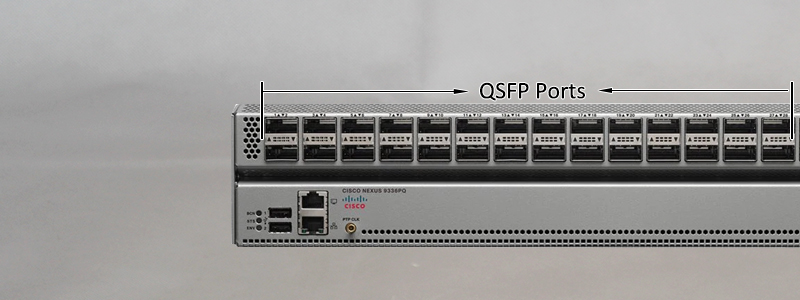

 Knowledge Base +
Knowledge Base +  2024.01.05
2024.01.05Small Form Factor Pluggable (SFP) is a compact, hot-swappable network interface module for telecom and datacom applications. We always see them in SFP slots in routers, switches etc.
Both SFP and QSFP have similar name " SFP". This means they have similar functionality. The Quad Channel Small Form Factor Pluggable (QSFP) transceiver is available in a variety of transmitter and receiver types, allowing the user to select the right transceiver for each link to provide the desired optical range over multimode or singlemode fiber.The QSFP was created to meet the market demand for a higher density, high speed pluggable solution. This 4-channel pluggable interface has a transmission rate of 40Gbps.
In this article I will cover some types of SFPs and QSFPs.
There are five types of SFPs:
(1) 1 Gbit / s SFP
1 Gbit / s SFP also offers the following subtypes:
1 Gbit / s multimode fiber, LC connector with black or beige pull-out bar
1.25 Gbit / s multimode fiber, LC connector, with unstandardized pull-out lever color
1 to 2.5 Gbit / s singlemode fiber, LC connector with blue pull-out lever
1 Gbit / s for copper twisted pair cable, 8P8C (RJ-45) connector
(2) 10 Gbit / s SFP +
Enhanced Small Form Factor Pluggable (SFP +) is an enhanced version of the SFP that supports data rates of up to 16 Gbit / s.
(3) 25 Gbps SFP28
SFP28 is a 25 Gbit / s interface that evolved from the 100 Gigabit Ethernet interface, which is typically implemented with 4 x 25 Gbit / s data channels.
(4) cSFPs
Compact Small Form Factor Pluggable (cSFP) is a version of SFP with the same mechanical form factor that allows two independent bidirectional channels per port.
(5) SFP-DD
The Small Form-factor Pluggable Dual Density (SFP-DD) multi-source protocol is the new standard for doubling port density.

QSFPs also come in five types:
(1) 4 Gbps QSFP.
The original QSFP documentation specifies four channels that come with Gigabit Ethernet, 4GFC (Fibre Channel) or DDR InfiniBand.
(2) 40 Gbit / s QSFP +
QSFP + is a development of QSFP that supports four 10 Gbit / sec channels that carry 10 Gigabit Ethernet, 10GFC Fibre Channel or QDR InfiniBand. these four channels can also be combined into a single 40 Gigabit Ethernet link.
(3) 50 Gbit / s QSFP14
The QSFP14 standard is designed to carry FDR InfiniBand, SAS-3 or 16G Fibre Channel.
(4) 100 Gbit / s QSFP28
The QSFP28 standard is designed to carry 100 Gigabit Ethernet, EDR InfiniBand or 32G Fibre Channel. For simplicity, this transceiver type is sometimes also referred to as "QSFP100" or "100G QSFP".
(5) 200 Gbit/s QSFP56
The QSFP56 is designed to carry 200 Gigabit Ethernet, HDR InfiniBand or 64G Fibre Channel.

Tip: Can 40G QSFP be connected to 10G SFP +?
Use an 8-pole MTP to LC fiber patch cable to directly connect a 40G QSFP + to four 10G SFP +. Four LC duplex connectors are required, and this direct connect solution is usually suitable for short distances. Example: Cisco QSFP-4SFP10G-CU5M, QSFP +, 4SFP + 10G, High Speed Direct Connect Cable.
Subscribe to the newsletter
for all the latest updates.
2-5# Building, Tongfuyu Industrial Zone, Aiqun Road, Shiyan Street, Baoan District, Shenzhen. China
